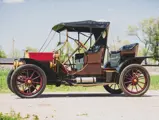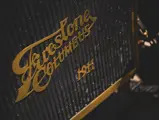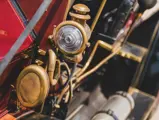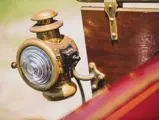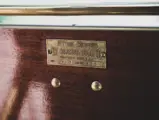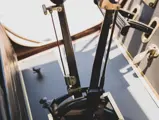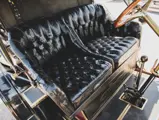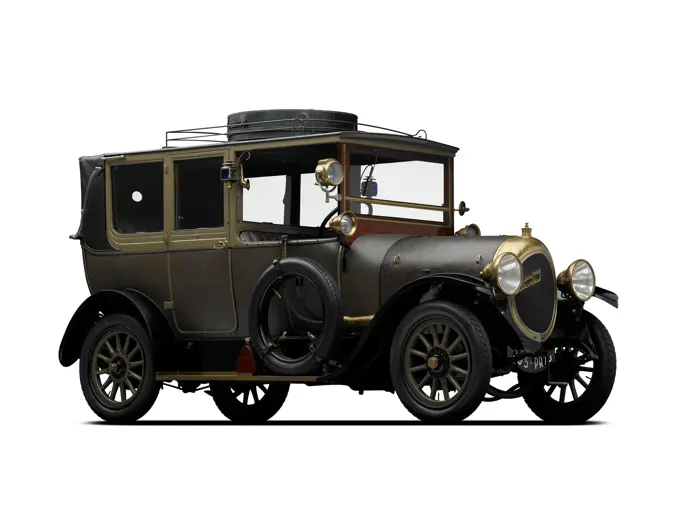In 1909 the Columbus Buggy Company of Columbus, Ohio, entered the upper end of the market with the $1,800 Firestone-Columbus, named for company president Clinton Dewitt Firestone. Touted as “The Car Complete,” it was a baby tonneau with a 35-horsepower four-cylinder engine and a 110-inch wheelbase.
The Firestone-Columbus was very advanced for its day, with left-hand steering and a drop-center chassis by 1910, center gear change in 1911, and an acetylene starter when most others were experimenting with compressed air. In 1911 chief designer and engineer Lee Frayer, with an adventurous youngster named Eddie Rickenbacker who had worked with him at Miller-Frayer, took a Firestone-Columbus to the first Indianapolis 500. Starting in 26th place and co-driving the Red Wing Special, they managed to finish 13th. Rickenbacker, initially the chief testing engineer for Firestone-Columbus, became a district sales manager before leaving to join Fred Duesenberg at the Mason Motor Company.
This Firestone-Columbus was acquired by the Merrick Auto Museum in 2001 from Platinum Classic Motorcars in East Rochester, New York. Restored in burgundy with black fenders, it has gold pinstriping. The seats are upholstered in black buttoned leather. The rumble or “mother-in-law” seat at the rear is unusual for being full-width, making the car a four-passenger vehicle. Brass Solar headlamps are supplied by a Presto-Lite tank with gauge, which is also connected to the sidelamps, which retain their kerosene canisters. There is also a storage compartment under the rear floor. The car is believed to have very low mileage, as there is no noticeable wear on the pedals or steering wheel.
The number of surviving Firestone-Columbus cars, of all types, is believed to be seven or eight. This car is certainly one of the best.

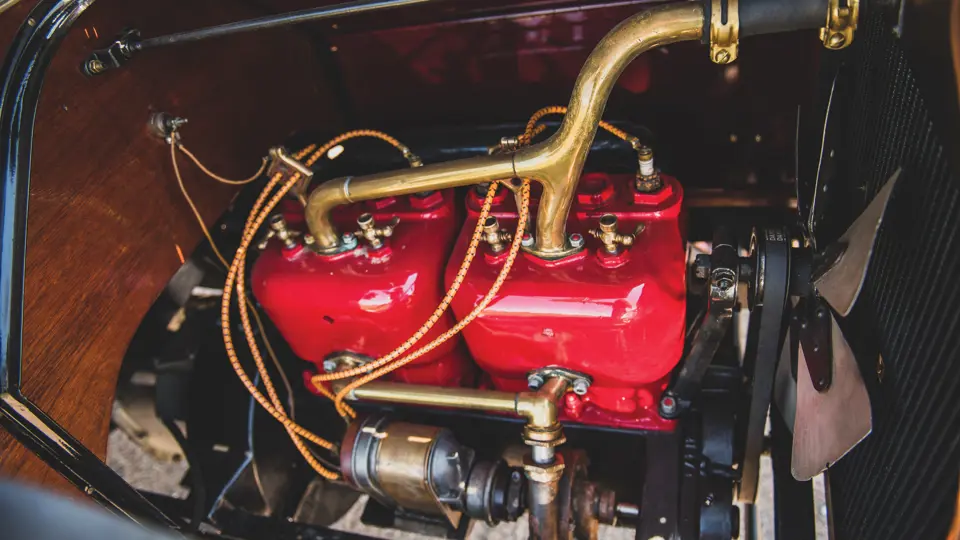
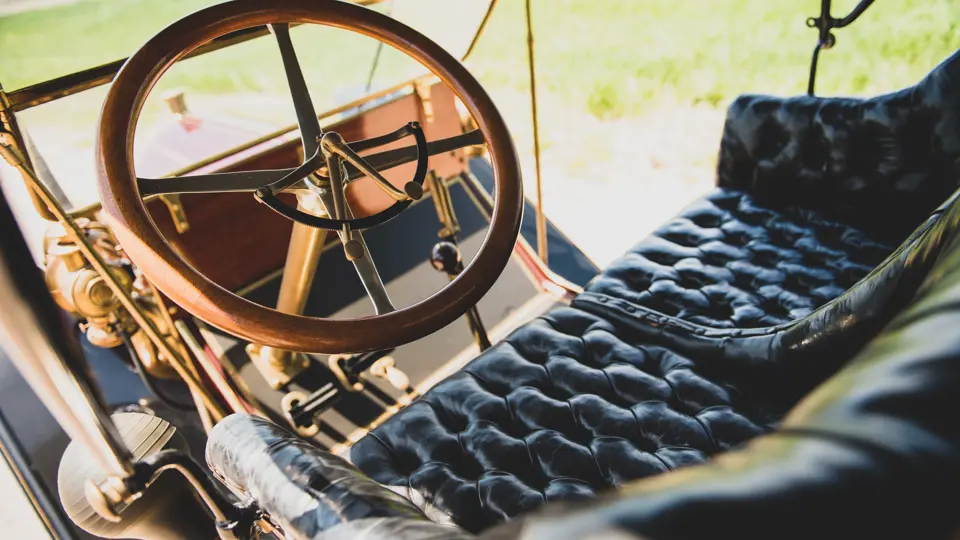

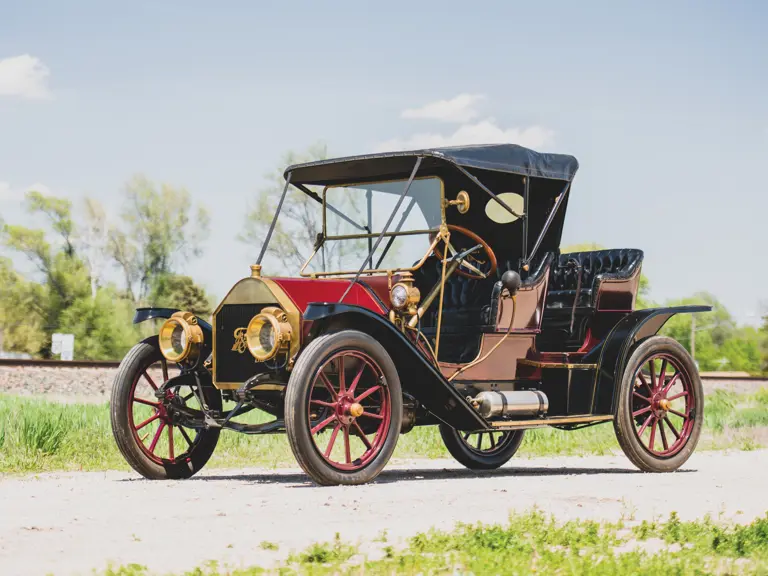



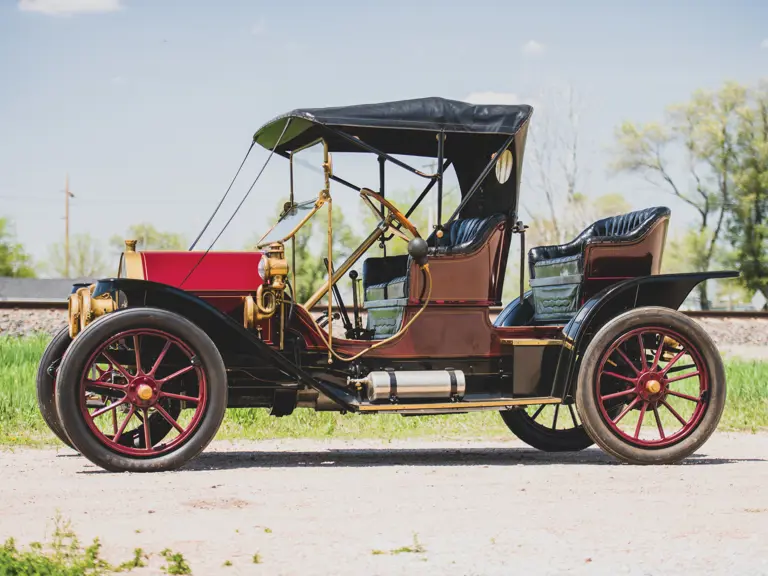

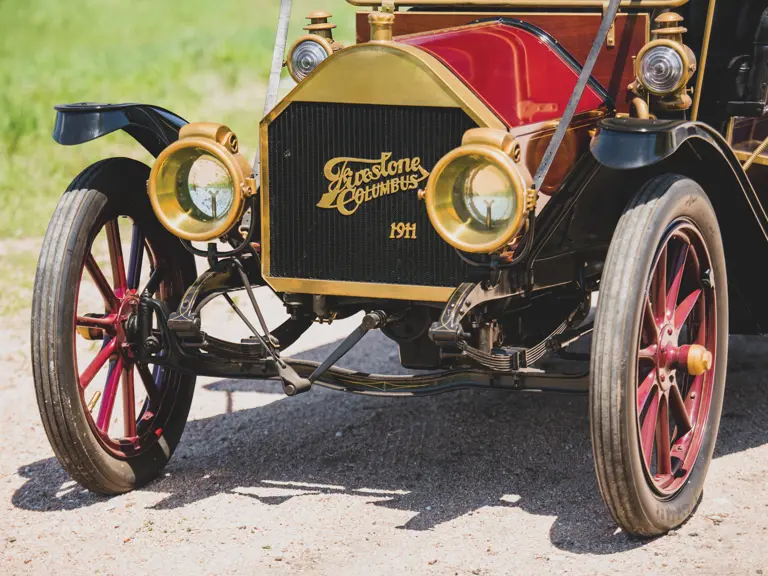

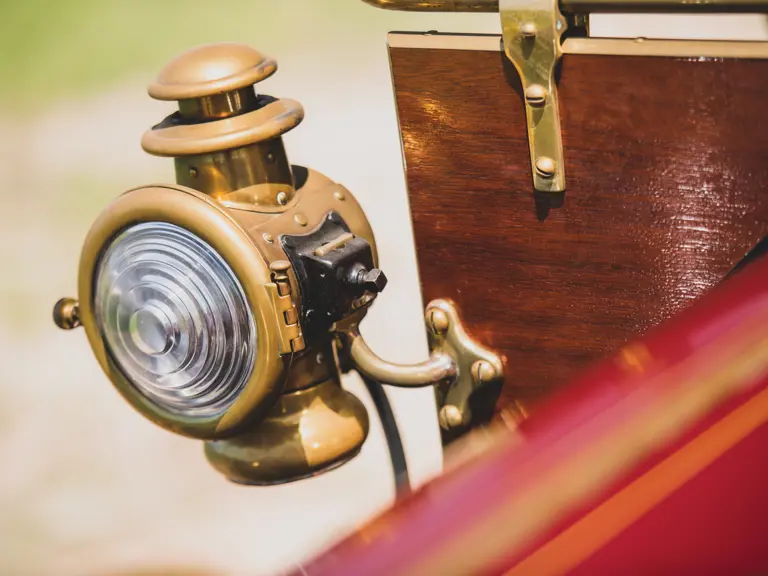
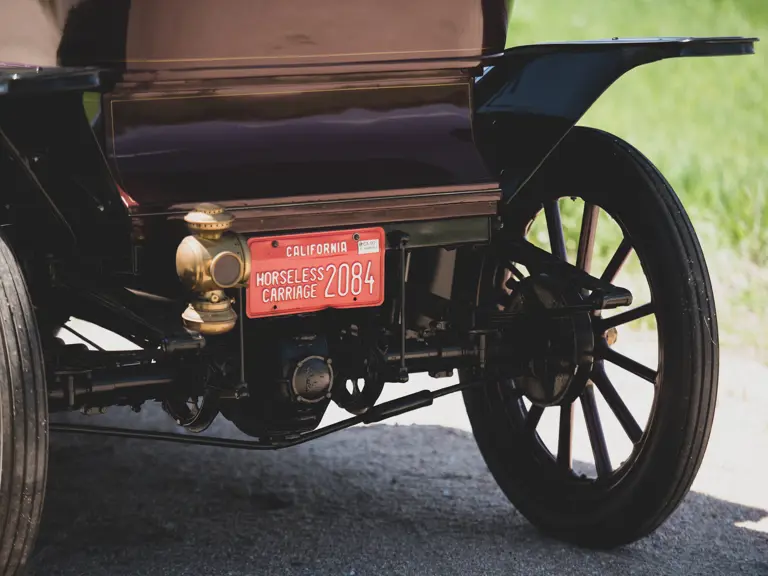

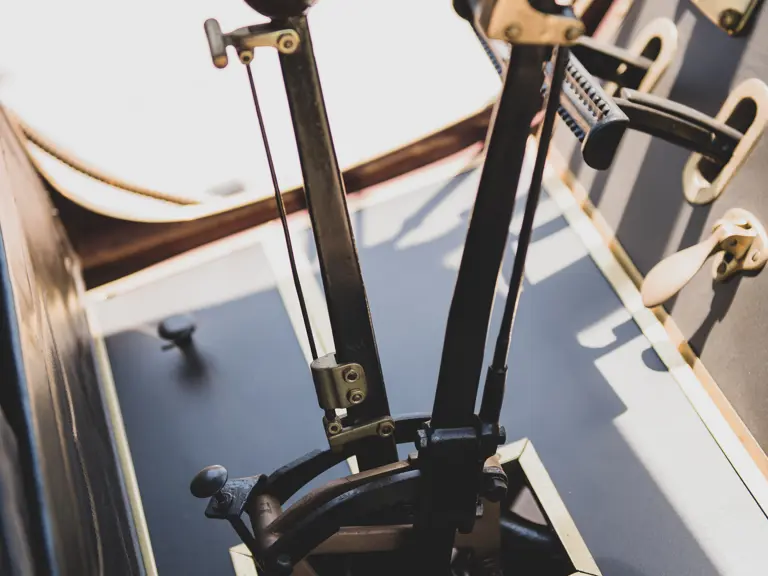

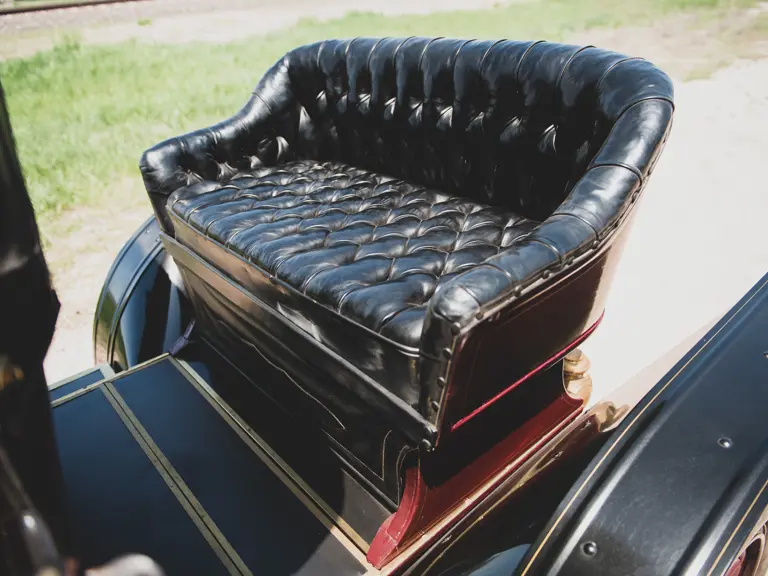
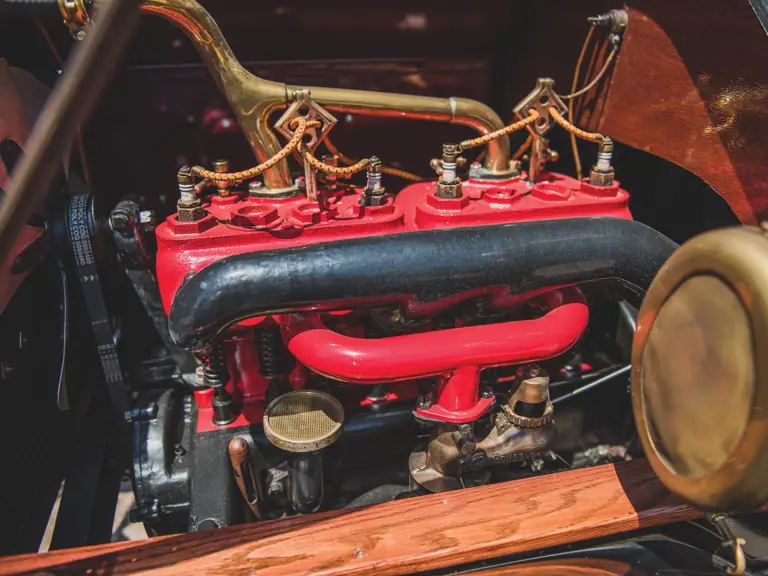
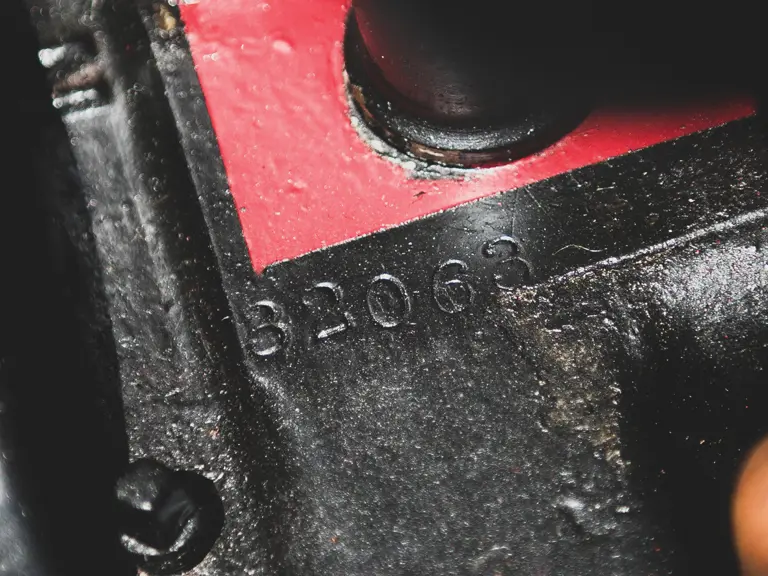
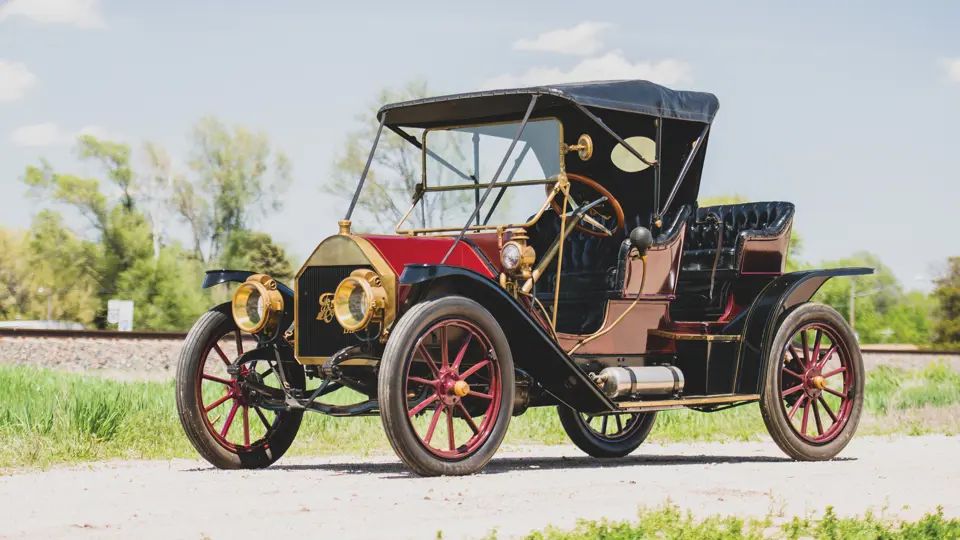
 | Hershey, Pennsylvania
| Hershey, Pennsylvania



